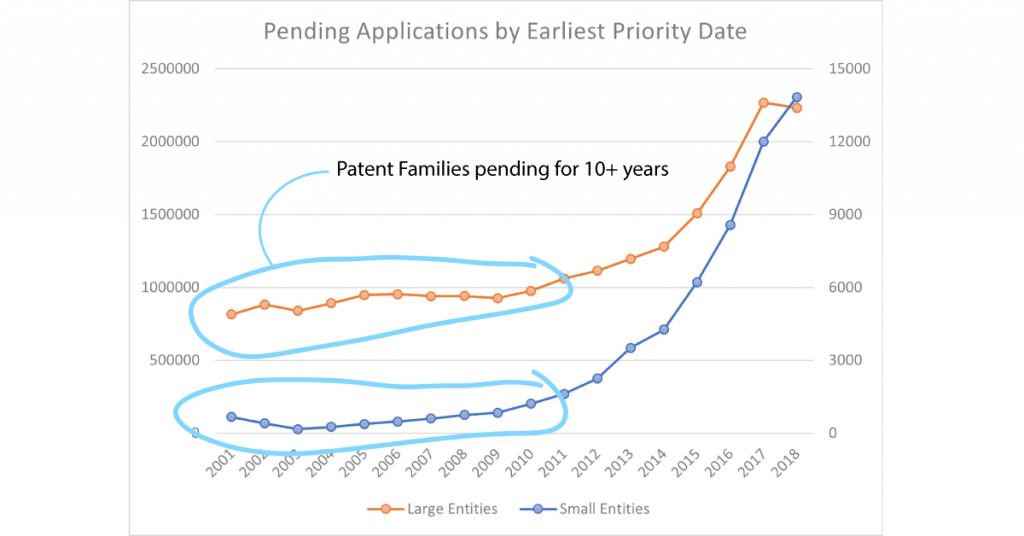Do Startups Give Up On Their Patents?
Patent valuation can be inferred from how much effort an applicant puts into their patent. One of the common criteria for the more sophisticated patent scoring algorithms is the number of continuation applications.

Having a pending application in a patent family is a huge asset.
A pending application allows you to create new patent claims after you see how the market develops. A long-pending application can be amended sometimes 15 years after the fact, allowing you to target specific competitors.
There is a tradeoff for this strategy.
The tradeoff is that all patents must expire 20 years from the earliest filing date. A patent that issues from a family that has been pending for 15 years will only have 5 years left on it. It is 3/4 expired at the time it is granted.
It should be noted that badly-done continuation applications result in lots of terminal disclaimers, which essentially gets you the same patent twice. Continuation practice can be one of the tactics that unscrupulous patent attorneys employ to milk their clients of extra money without adding much value.
However, large entities tend to use this tactic far more than smaller entities.
Large entities tend to have a large inventory of patents pending for a very long time. Large entities are companies with 500+ employees, and presumably represent the most sophisticated patent owners.
The graph shows the inventory of pending applications by their earliest priority date.
The pending applications at the top of the curve, about 2017-2018, are mostly the original applications going through the first examination. However, the long tail of the curve, especially from 2001-2010, represent applications that are continuation applications within a large patent family.
It is striking that large entities – presumably with the most sophisticated patent strategies – seem to have more than a third of their patent families alive for the entire 20-year period. In comparison, only 1/10th of the small entities kept their patent families alive at the 10-year period.
What factors can cause this huge disparity?
First, small entities might not have survived long enough to have a 15+ year patent pendency. Certainly, many startup companies have long ceased operating by the 15-year mark.
Second, smaller entities do not have the sophisticated patent research and management that large companies do. The typical small entity has outside patent counsel but not full-time inhouse counsel. Inhouse counsel is responsible for creating IP assets, but more importantly, inhouse counsel is responsible for deploying IP assets to further the business.
Simply put, outside counsel’s role ends when a patent is granted, but that is where inhouse counsel’s job begins. Inhouse counsel appear to see value in the continuation applications, so they continue their investment in the assets.
The graph shows that large entities are investing far more money in continuation strategies than small entities. This strategy is worth it when you put enough research and thought into the selection process prior to filing, and when you follow the patent application process over time.
About the data: These data were compiled from AcclaimIP. The “small entity” data represent small entities as defined by the USPTO, with any university and non-profits removed. The “large entity” data are undiscounted entities.